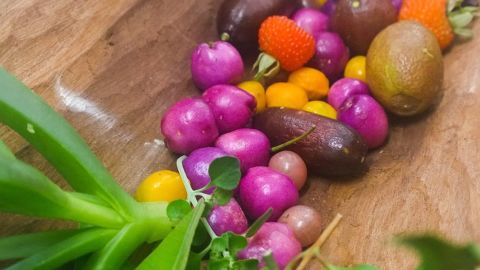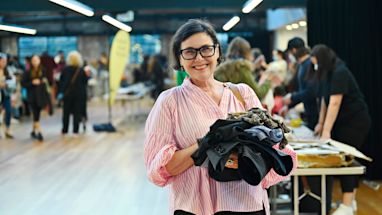Sydney Park was once a forest of turpentine and ironbark trees, crisscrossed by creeks and waterways. The Gadigal and Wangal peoples used it as a kangaroo hunting ground, and to collect plants and other resources.
Sydney Park is home to many plants which can be used for food, from fig trees to saltbush, and even Banksia nectar.
Jess Sinnott, a Yuin and Wailwan woman living in Sydney, says people are surprised to discover traditional bushfoods and medicine plants growing in their parks and gardens.
“Natural resources around Sydney Park – trees, plants and even animals – were used sustainably by Aboriginal people,” says Jess.
“Certain wattle trees were used to make a poison to stun fish, and their leaves used to make soap. Nothing went to waste.”
As well as a source of food and resource, Jess says plants were important in storytelling.
“Our mums would say if you sat underneath Sydney Park’s she-oaks then you’d be protected from snakes, but maybe that was just to discourage their kids from wondering too far.”
Sydney Park was an industrial area in the 19th and 20th centuries, famous for clay quarries and brick kilns before it was transformed into a park and haven for native wildlife.
Its 40 hectares are now filled with native plants and trees, and there are more than 100 species of bats, birds, reptiles and bugs. Tawny frogmouths, Australian pelicans and even peregrine falcons have been spotted in recent years.
Join a bush food discovery tour at Sydney City Farm with guides from Koori Kinnections.
Learn about the living Aboriginal cultural connection to landscape and bush foods suitable for growing in the city.
Published 25 September 2018, updated 3 November 2023



